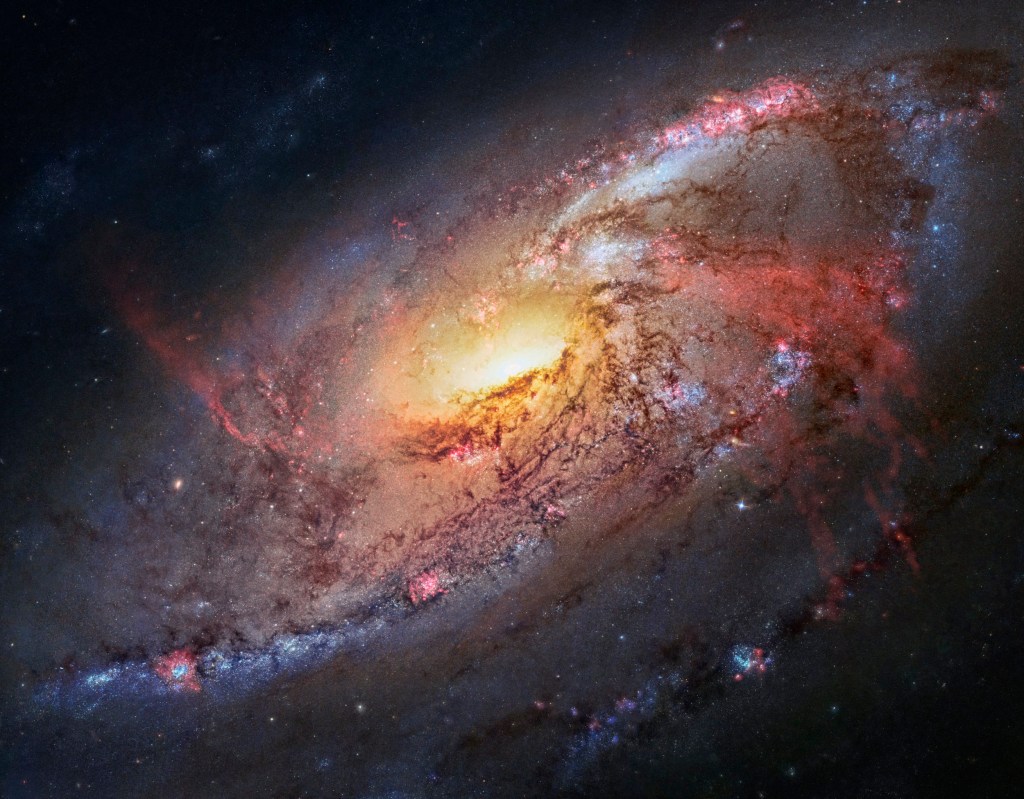The presence of dark energy means the most distant objects in the universe are accelerating away from us (Picture: Getty Images/iStockphoto)
In the 25 years since dark energy was discovered, scientists have figured out two big things about it: it makes up around 68% of the universe, and it only gets more confusing.
If you’re wondering what dark energy is, then you’re not alone – the world’s collective scientific community also has no idea.
But researchers from around the planet have just revealed the results of a study that may shed a bit more light on the mysterious material.
Or, if you look at it another way, they may have just prompted even more questions.
To explain what they discovered, it helps to begin by explaining why the concept of dark energy exists.
Before 1998, scientists were fairly satisfied that they could safely say one thing about the universe. It was expanding, but thanks to the tendency of gravity to pull things together over time, it must be expanding more slowly.
Then some astronomers decided to point the Hubble Space Telescope towards some very, very distant supernovae – ie, stars that are exploding at the end of their life – and what they found stunned them.
The explosions weren’t as bright as they would have expected had that theory about the universe’s expansion slowing down been accurate.
Instead, it turned out the expansion of the universe was getting faster and faster, and it is in fact hurtling outwards more quickly than ever before. (Into what? Let’s not get into that.)
This meant there must be something else at play – a kind of anti-gravity that repels rather than attracts. The scientists named it ‘dark energy’, and over the past quarter century they’ve been breathlessly trying to figure out how it behaves.
Which brings us to the Dark Energy Survey (DES), a 10-year analysis of 1,499 supernovae that has been aiming to answer some of the many, many questions.
One of those was whether dark energy is a constant. If it is, that would point to the simplest possible explanation of its existence, as it would slot relatively neatly into the theories that Oppenheimer star Albert Einstein came up with more than 100 years ago.
However, the DES results suggest – you guessed it – that dark energy isn’t a constant after all, and may in fact get diluted as the universe gets bigger.
If this is backed up by a bigger survey, it would ‘point to exciting, exotic new physics’, according to Dr Or Graur, Associate Professor of Astrophysics at the University of Portsmouth.
For those looking to dive into the technical terms, we’re talking about dark energy’s equation of state, which is the ratio of its pressure to its energy density. If it was constant, then this figure – represented by the letter w – would be equal to minus one. But the DES instead found it was equal to minus 0.8.
Dr Philip Wiseman from the University of Southampton was the man who presented the findings at the 243rd American Astronomical Society (AAS) meeting in New Orleans.
He said: ‘Twenty-five years after we first detected that it must exist, we still know very little about dark energy.
‘That’s part of what makes it exciting. All the data up until now have been consistent with dark energy being a constant but these results open up the intriguing possibility that the density of dark energy could have changed as the universe expands.
‘Knowing whether it is or isn’t a constant will help us to narrow down the theories as to what dark energy might be.’
Dark energy makes up around 68% of the universe, but nobody knows what it is.


